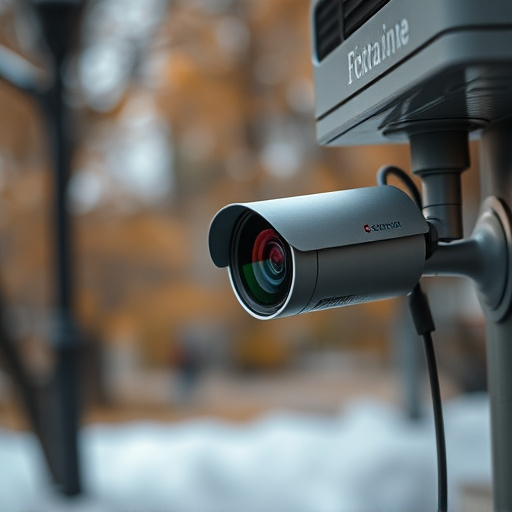Deploying small hidden cameras in nurseries requires careful consideration of legal consent and privacy rights. Parents' explicit approval is vital, along with consultation with legal experts to adhere to regional regulations. These cameras, featuring HD, night vision, and motion detection, offer enhanced safety but must be used responsibly, ensuring transparency and data protection. Detection methods include visual inspections, thermal imaging, and security protocols to prevent unauthorized use.
In today’s digital era, ensuring safety and security in nurseries has become paramount. This comprehensive guide explores covert recording spot identification methods, focusing on small hidden cameras as a crucial tool. We delve into the legal implications of covert recordings, providing insights into what constitutes acceptable monitoring practices. Additionally, we cover ethical considerations for baby monitoring devices, offering effective strategies to detect secret recording spots, ensuring peace of mind without compromising privacy.
- Understanding Legal Implications of Covert Recording
- Identifying Discreet Camera Placement in Nurseries
- Advanced Technology in Small Hidden Cameras
- Ethical Considerations for Baby Monitoring Devices
- Effective Strategies to Detect Secret Recording Spots
Understanding Legal Implications of Covert Recording
Before employing covert recording methods, it’s crucial to understand the legal implications surrounding this practice. The use of small hidden cameras, especially in sensitive areas like nurseries, is a delicate matter and varies significantly by jurisdiction. In many places, capturing audio or video without explicit consent can infringe on privacy rights, leading to potential legal consequences for individuals or businesses involved.
For instance, laws regarding covert recording often require explicit notification that such surveillance is occurring. Using small hidden cameras in a nursery setting may be permissible if parents or guardians provide informed consent and are made aware of the camera’s presence. It’s essential to familiarize yourself with local legislation and consult legal professionals to ensure compliance, especially when implementing measures like these small hidden cameras for nursery environments.
Identifying Discreet Camera Placement in Nurseries
Identifying covert camera placement in nurseries requires a keen eye for detail and an understanding of the latest small hidden cameras for nursery applications. These tiny devices are designed to operate discreetly, making them excellent tools for monitoring sensitive areas like infant care environments. By strategically placing these cameras in hidden locations, such as false fire alarms, air conditioning units, or even seemingly innocuous decorative items, caregivers can ensure round-the-clock supervision without alerting potential intruders or causing alarm among children.
Nurseries should implement a comprehensive security strategy that includes regular camera maintenance and staff training on their use. Additionally, keeping up with evolving technology ensures that the latest models—often smaller and more advanced than ever before—are utilized to maximize coverage and quality of footage. This proactive approach not only enhances safety but also promotes transparency and accountability in nursery operations.
Advanced Technology in Small Hidden Cameras
The evolution of technology has led to a remarkable advancement in small hidden cameras, making them more sophisticated and versatile than ever before. These compact devices are no longer just a novelty but powerful tools for various purposes, including monitoring and safety. In particular, Small Hidden Cameras for Nursery have gained popularity among parents seeking discreet surveillance options for their children’s spaces.
Modern small hidden cameras offer advanced features such as high-definition video recording, night vision capabilities, motion detection, and remote access through mobile apps. This allows parents to keep an eye on their little ones’ activities even when they’re away from home. With miniature designs that can fit discreetly in a corner of a room or attached to everyday objects, these cameras provide peace of mind while ensuring the privacy of children and their spaces.
Ethical Considerations for Baby Monitoring Devices
When using small hidden cameras for nursery monitoring, it’s imperative to navigate the ethical landscape carefully. These devices, while designed to provide peace of mind and enhance safety, raise important privacy concerns. Parents must remember that capturing and storing images or audio of individuals—especially infants who cannot consent—carries significant responsibilities. Transparency is key; inform all parties involved, especially those within the immediate environment, that such monitoring is occurring.
Respecting personal boundaries and ensuring informed consent from everyone present in the nursery setting is crucial. The use of hidden cameras should be limited to specific, legitimate purposes, such as safety and security, and not exploited for excessive surveillance or invasive observation. Regularly reviewing and updating privacy policies and procedures can help maintain ethical standards and ensure compliance with relevant laws governing data protection and privacy.
Effective Strategies to Detect Secret Recording Spots
Detecting secret recording spots, often utilized by small hidden cameras in nurseries or sensitive environments, requires a multi-faceted approach. One effective strategy is to conduct regular visual inspections, paying close attention to areas that might be easily overlooked, such as corners, behind furniture, or under surfaces. Utilizing advanced technology like thermal imaging cameras can also prove beneficial, as hidden devices often generate heat disparities that can be detected.
Additionally, staying vigilant about unusual behavior and implementing access control measures are crucial. Installing security systems with motion detectors and regular monitoring can deter potential perpetrators. For instance, in nurseries, parents or staff should establish clear protocols for checking cameras and ensuring all devices are properly secured and approved by relevant authorities to maintain a safe and secure environment.
The covert recording of sensitive areas, particularly nurseries, raises important legal and ethical considerations. With advancements in small hidden camera technology, it’s crucial to be aware of discreet placement methods and implement effective detection strategies. By understanding the legal implications and ethical responsibilities surrounding baby monitoring devices, parents and caregivers can ensure a safe environment while navigating the complexities of privacy laws. Staying informed about these issues is key to protecting against unauthorized use of hidden cameras, especially in intimate settings like nurseries.
